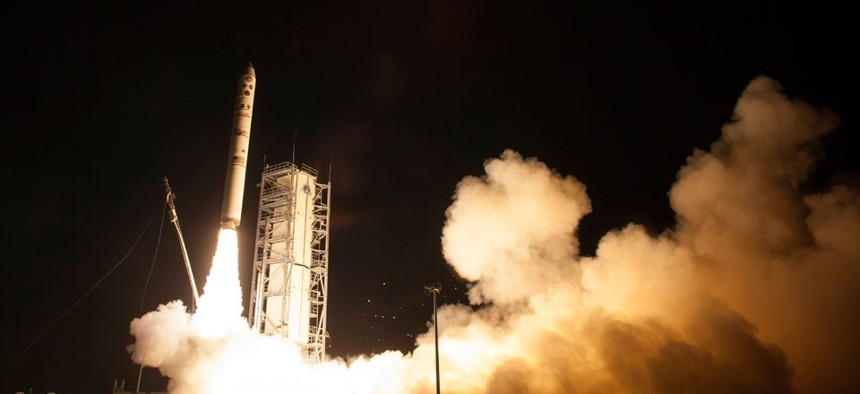NASA Wants You to Play Its Satellite Moon-Crash Guessing Game

An unmanned Minotaur rocket carries NASA's newest robotic explorer, the LADEE spacecraft, which is charged with studying the lunar atmosphere and dust, NASA/AP
When will a satellite go splat on the moon? Guess now and you could be a winner.
A NASA satellite is about to smash into little bits and pieces all over the moon.
The space agency wants you to use math—or just a gut instinct—to figure out when the crash will happen. The LADEE spacecraft could wreck tomorrow or two weeks from now; guess the closest and NASA will acknowledge your smarts with a personalized certificate.
The crash-landing is part of NASA's plan; the short-lived satellite has already served its purpose. "The mission was always designed for a relatively short life," said NASA's Joan Salute. "The prime mission is already in the bag."
LADEE—the Lunar Atmosphere and Dust Environment Explorer—has been circling the moon, making observations about the dust particles surrounding it. "We didn't know very much about the lunar atmosphere and dust environment before we went there," NASA scientist Rick Elphic said. By the time LADEE's data is analyzed, "we will have at least quadrupled the amount of [elements] known in the lunar atmosphere."
In addition to its dust analysis, LADEE helped pioneer a superfast, laser-based Internet connection—the longest of its kind ever established.
The satellite has been orbiting at about 30 miles above the moon since October. Now comes the fun part. On Saturday, LADEE "will rapidly drop to very low altitudes," said NASA's Butler Hine. Skimming over the ground, it will start sending back up-close readings of dust close to the lunar surface.
"We really discover new things every time we drop lower," Hine said. The plan isn't foolproof. Although NASA hopes the satellite will continue its moon study for a couple more weeks, the moon's "lumpy gravity field" makes for a roller-coaster-like ride. "It's pretty risky," Hine said. "We've designed it so that we get as close as we can without clipping the [surface], but there's natural uncertainty."
Even if LADEE avoids an early wipeout, it will have another challenge to contend with. On April 15, a four-hour eclipse will leave it without the solar power it needs to keep going. According to a NASA release, this will create "conditions just on the edge of what it was designed to survive."
If the satellite can retain enough juice, there's still a chance the propulsion system will freeze in the cold during the blackout. Should it survive, NASA expects it will hang around until about April 21 before finally smashing down.
The impact—which is supposed to happen on the far side of the moon in order to avoid historical lunar landing sites—could be a single explosion on the edge of a crater wall or a series of skips, like a stone across a pond. Either way, it will leave plenty of carnage.
"If you hit anything at 1,600 meters per second, this is not something you walk away from," Elphic said. "This is by no means gentle."
So how does NASA feel about seeing LADEE obliterated? "You're very proud of the success, but you're also a little melancholy that you won't be talking to your spacecraft again," Hine said.
Want to guess when the crash will take place? Here's NASA's "Take the Plunge" challenge.





